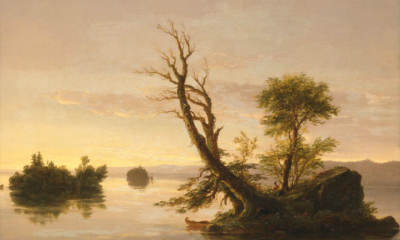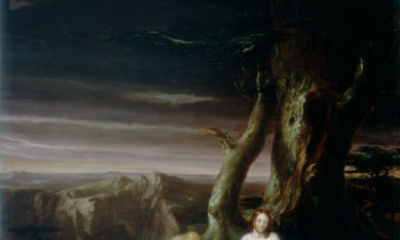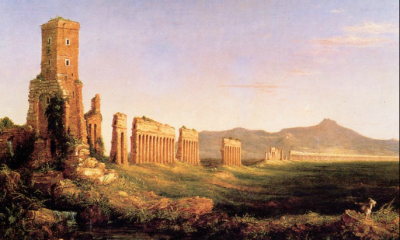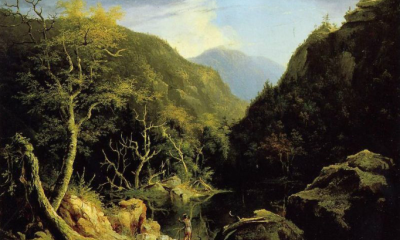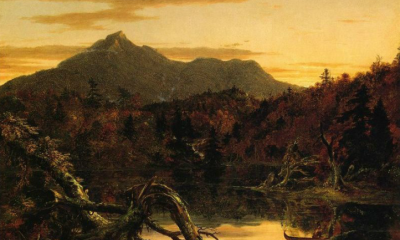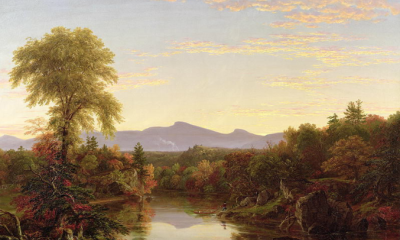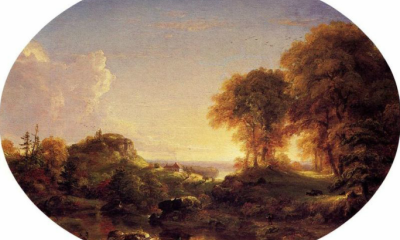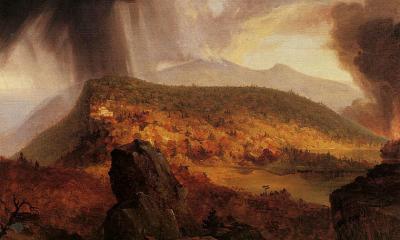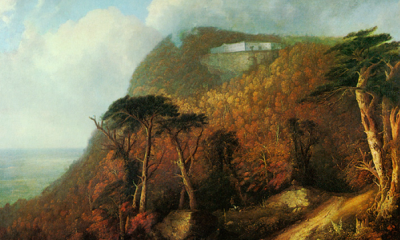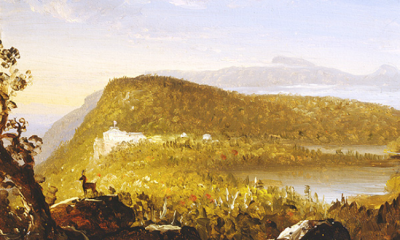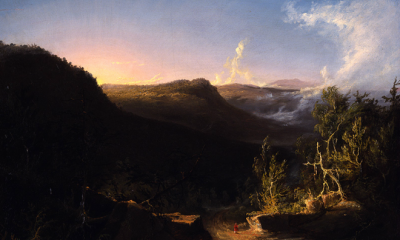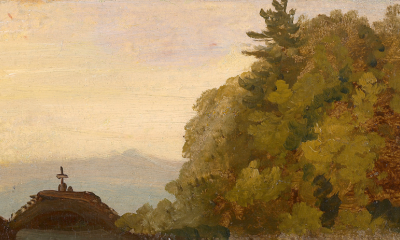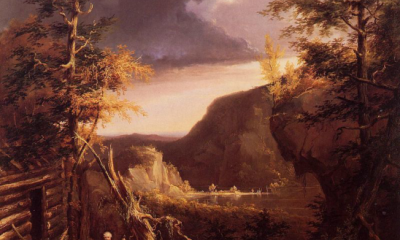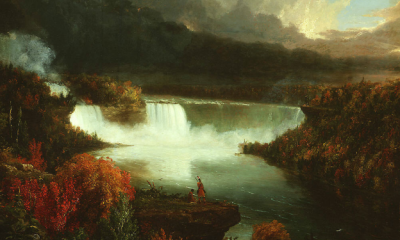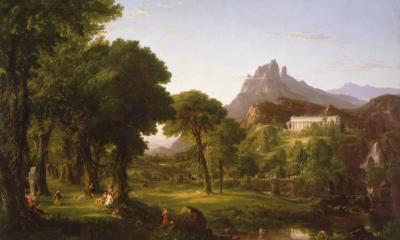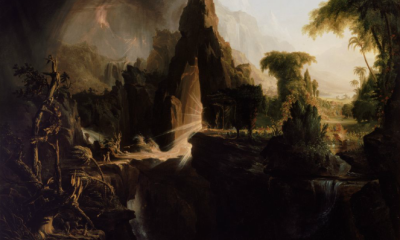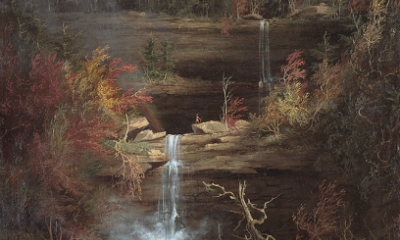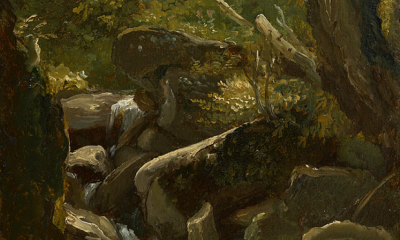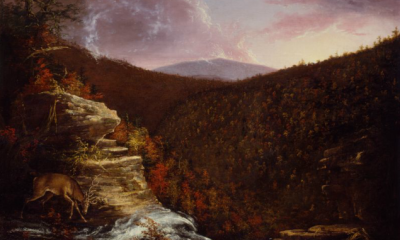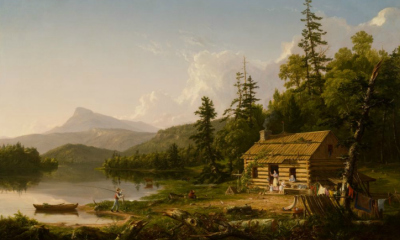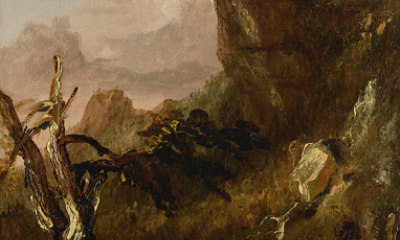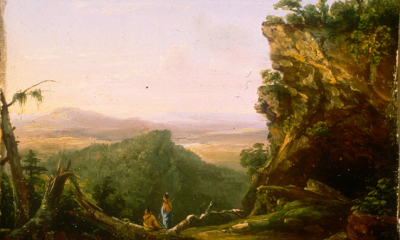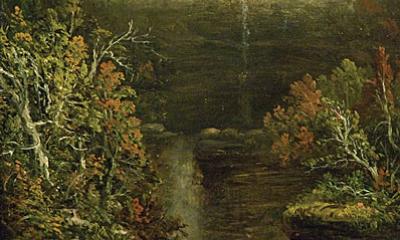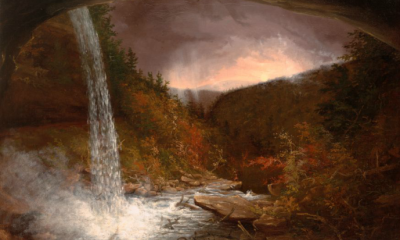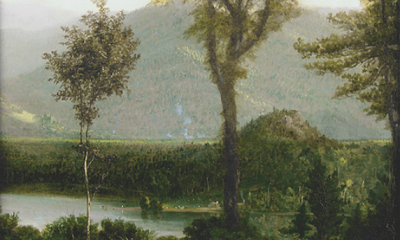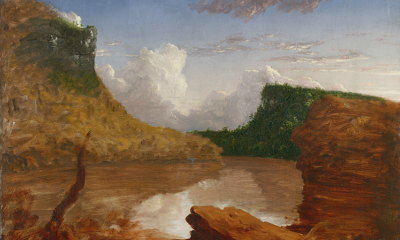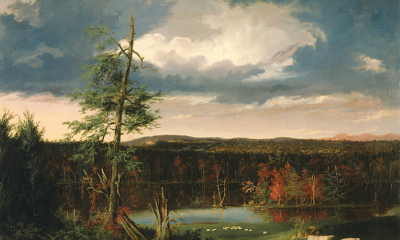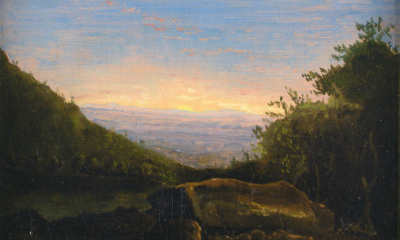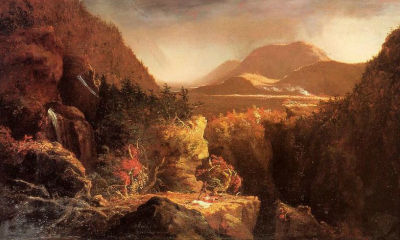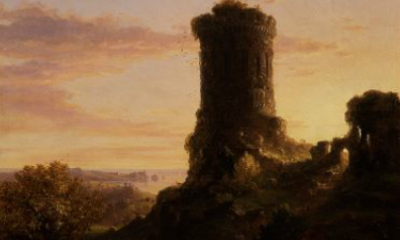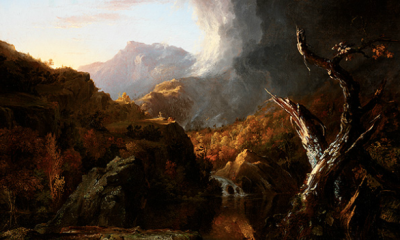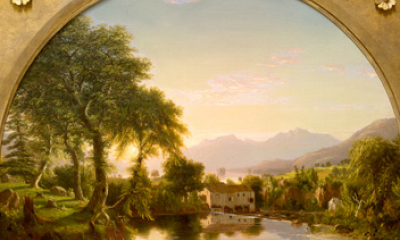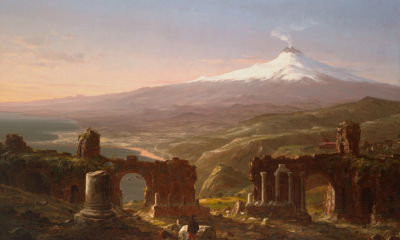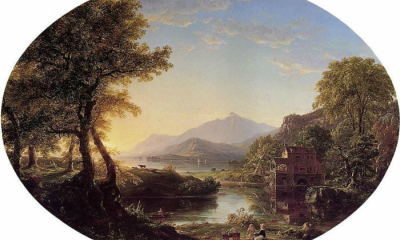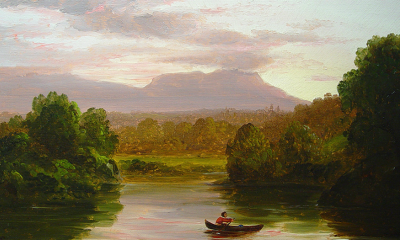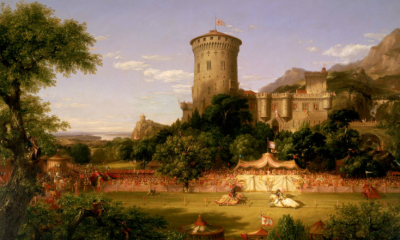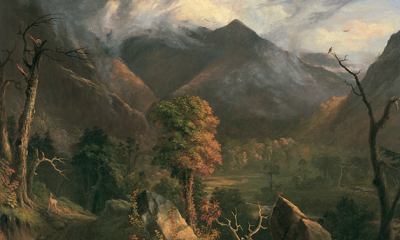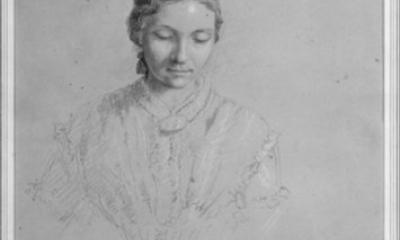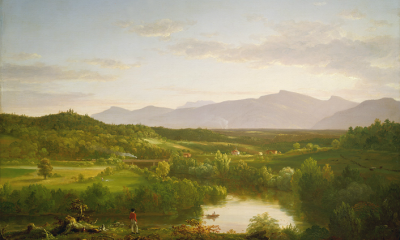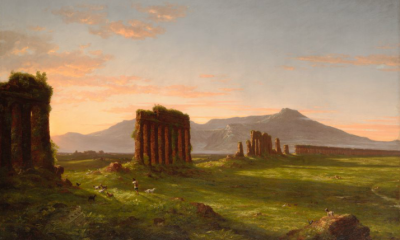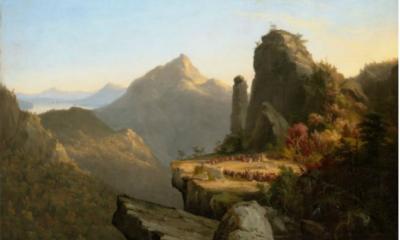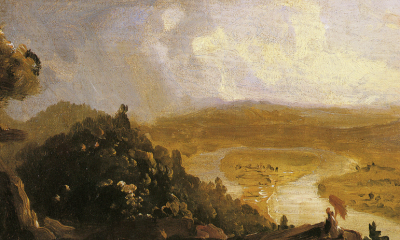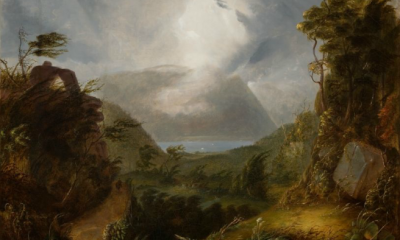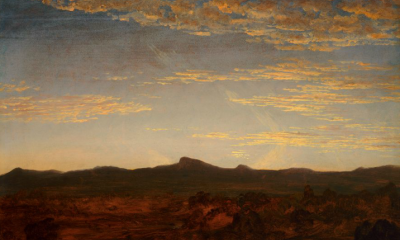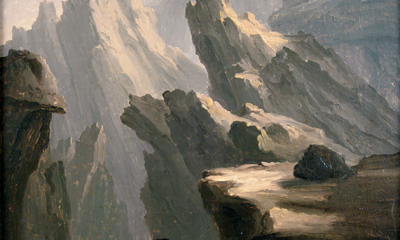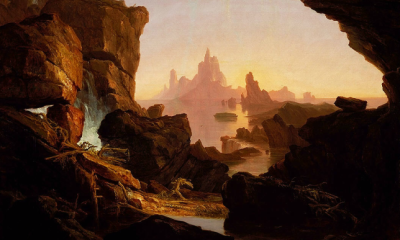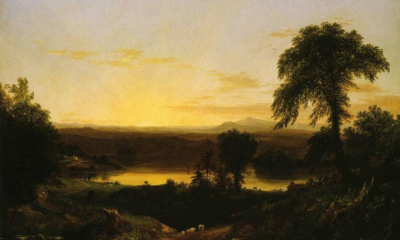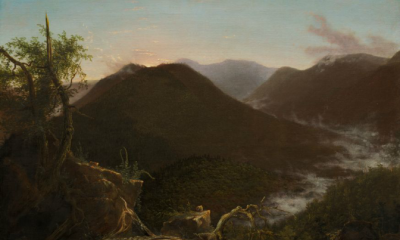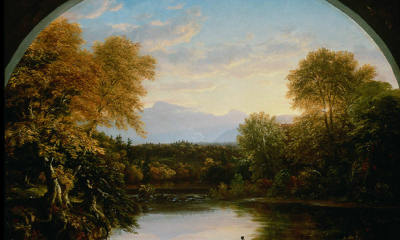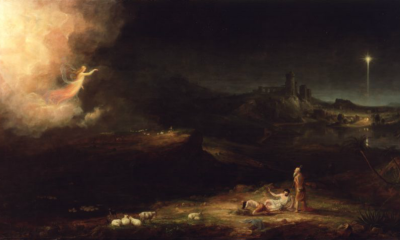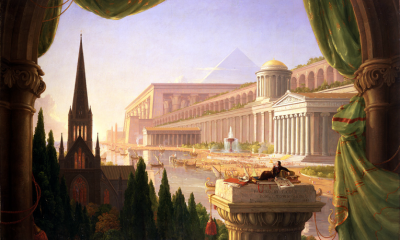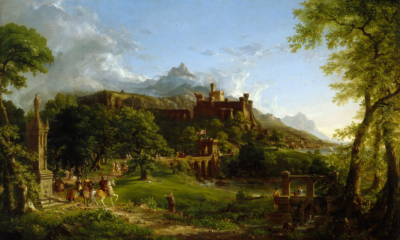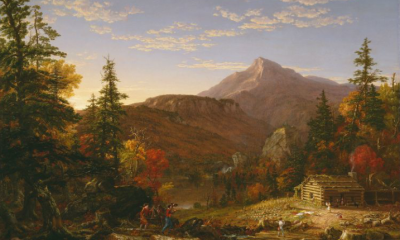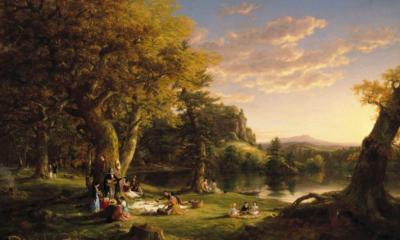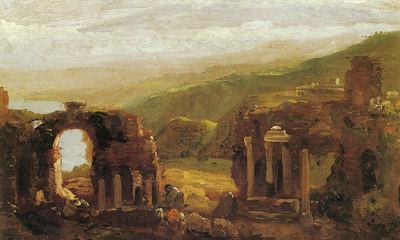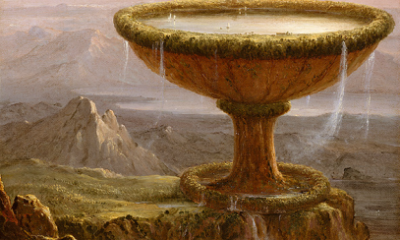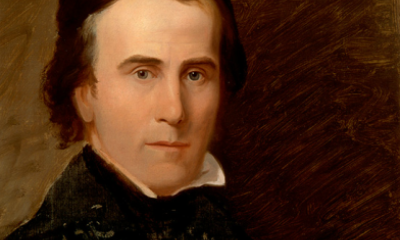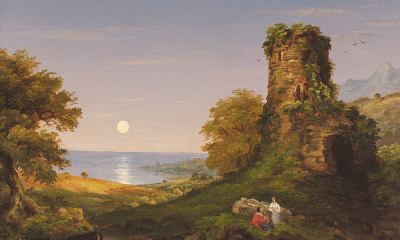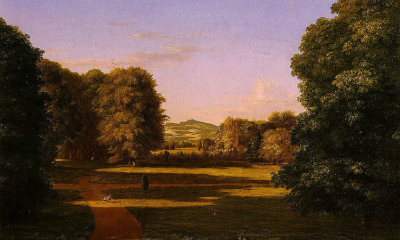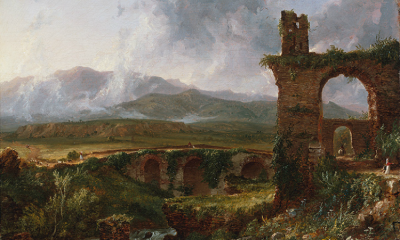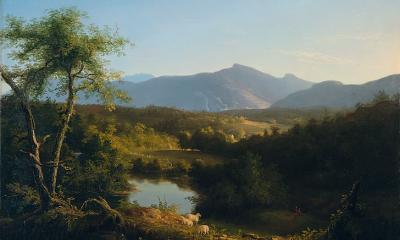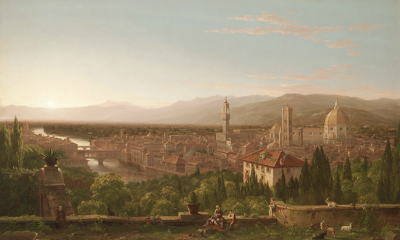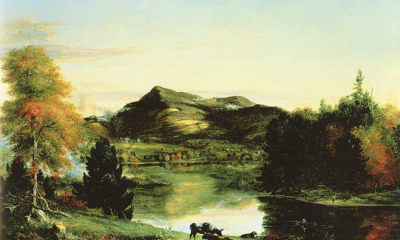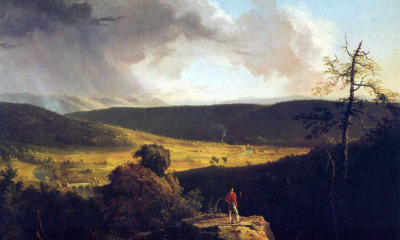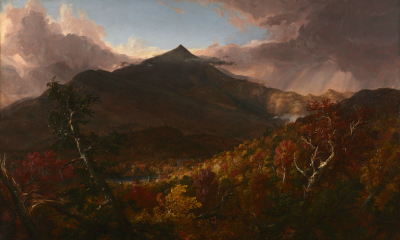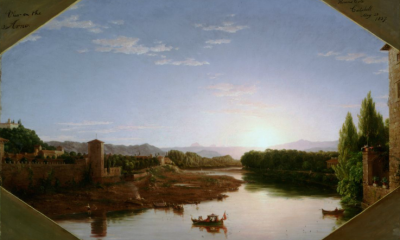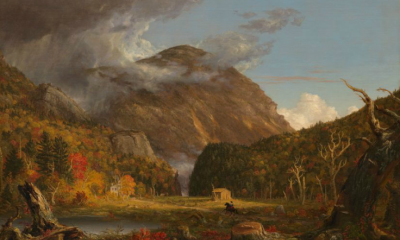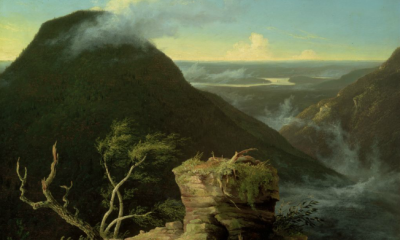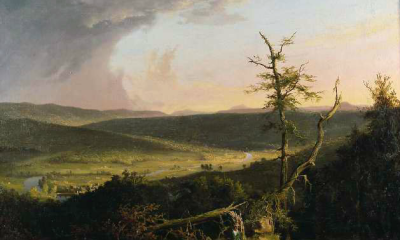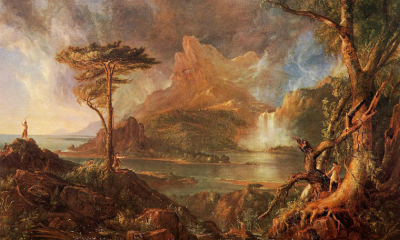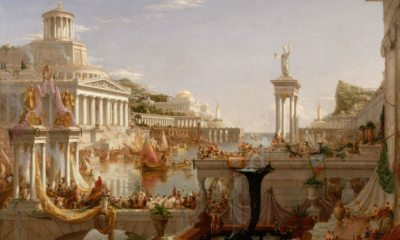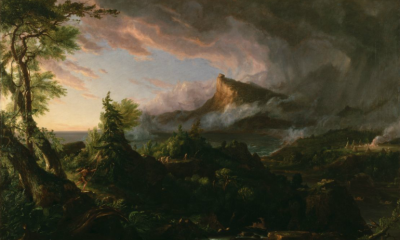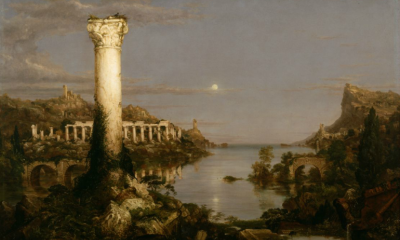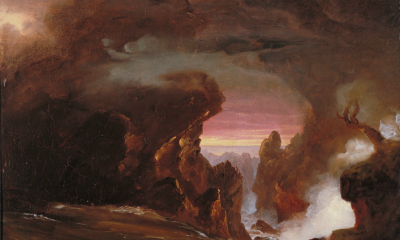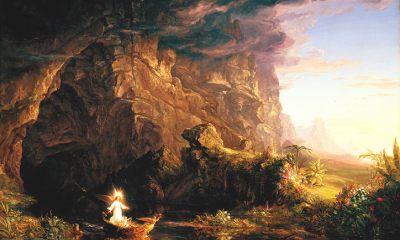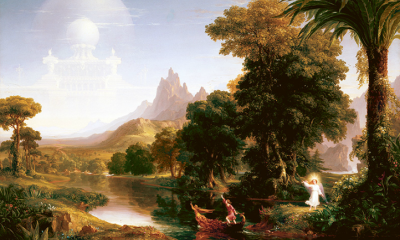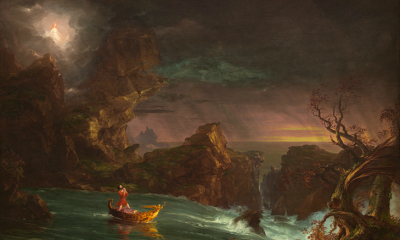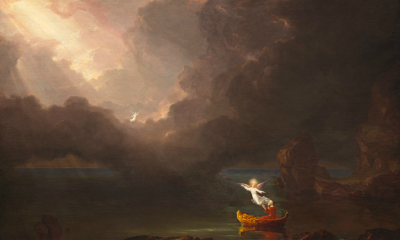Thomas Cole
Founder of the Hudson River School
Thomas Cole, a landscape painter from England, became the father of America’s first truly distinguished artistic style, the Hudson River School. How did he do it? One breathtaking vista at a time.
The many works of art created by Thomas Cole
Thomas Cole: Finding the Muse
Born in 1801, Thomas Cole and his family moved to America from Britain, the birthplace of the Industrial Revolution, in the early 19th century. Cole had taught himself to sketch and paint, and worked for a time painting portraits in Philadelphia, Pittsburgh and even Ohio.
His journey up the Hudson River in the autumn of 1825 proved to be a dazzling turning point in his life as he marveled at the colorful fall foliage surrounding the river banks. Compared to an English autumn, and the churning wheels of production and industrial steel found in cities, New York’s pastoral landscape was an untamed riot of color that led into a vast and unspoiled wilderness.
Cole spent his time on the boat sketching scraps of the landscape, and once docked, of the mountains and waterfalls that rose and crashed before him. Inspired by the wild beauty of the Catskills landscape, he exhibited a series of small paintings upon his return to New York City, earning him the attention of Asher Brown Durand, an established figure among the City’s artistic set, who would become one of Cole’s lifelong supporters and friends.
For Cole, America’s untamed wilderness became a thing of mythic inspiration, a muse that would alter the course of his life and lead to the creation of America’s first major artistic style – the Hudson River School.
Though he traveled abroad for some years, earning a reputation as a painter of masterly skill, Cole returned to the Catskills by the early 1830s to establish a rural studio in Catskill. Here, the famous painter rented studio space at a property known as Cedar Grove, which would, in the years that followed, become his permanent residence.
Cedar Grove is now the Thomas Cole National Historic Site.
Falling in Love with Nature: An Affair Begins
John A. Thomson, the owner of Cedar Grove, a 100-acre farm overlooking the Hudson River in the village of Catskill, rented Cole a charming cottage so that the burgeoning painter could continue to develop his particular artistic style.
It was at Cedar Grove that Cole met, fell in love with, and married Maria Bartow, Thomson’s niece who also lived at the farm. Together they had five children, four of whom survived into adulthood. The couple continued to live at Cedar Grove, while Cole began a new tradition in America to consider the country’s natural beauty as a treasure to be preserved.
It was here that he began working on Course of Empire, a series of paintings depicting the rise and fall of an apocryphal civilization. The paintings and his views on the impact of industrialization on the natural world began to manifest into the singular idea that nature – as God’s creation – represented the divine, and he implored his fellow citizens to better appreciate the fragile and rapidly disappearing beauty that surrounded them.
The Course of Empire series
Two Masters: Beauty and Sublime
Within Cole’s body of work there are many themes, from the power of natural landscapes, to the cycle of life, and even the potency of architectural design – and two overarching concepts: an ephemeral quality of Beauty juxtaposed against an element of the Sublime.
In Cole’s hands, Beauty was epitomized as an inviting landscape in which man and nature lived together in harmony. The Sublime represented a fearsome landscape, and was often depicted as an impending storm pregnant with rain, or a gnarled tree with broken branches and exposed roots.
Throughout his collection of paintings and sketches, Cole’s two concepts can be seen as intertwining themes, used to convey the force of nature and to imbue the divine spirit of the wilderness into the landscape.
For a visual representation of Cole’s concepts and themes, his 1827 painting titled The Clove, Catskills features a balance of these elements and themes.
The Emerging Master: Cole’s Beginnings
Initially, Cole taught himself to draw using instructional step-by-step manuals such as Elements of Drawing that covered the basics of sketching and form. Later, he studied at the Philadelphia Academy, and his canvases were included in the Academy’s exhibitions. While in the Catskills, he began to paint en plein air, taking his direction from the light and landscape surrounding him. From the Catskills to the Adirondacks, the White Mountains to Europe, Cole’s paintings captured not only the scene, but the sense of place it evoked within him. He called this a “deep toned emotion,” that forced him to confront and contemplate eternity.
After deciding on a subject for a painting, particularly his landscapes, Cole is quoted as saying that he would sit with his memories, absorbing the scene, letting the non-essential “common details” fade until he had an impression of the scene, the Beauty and the Sublime. And then, back at his studio, he would begin to paint the final composition. Cole referred to this process as “time drawing a veil,” reinforcing the perspective of nature as a crucible of both creation and destruction.
Thomas Cole’s Patron: Luman Reed
Cole, like many artists, had several patrons who provided both financial and moral support to further the development of his skill. Luman Reed, a prosperous, retired merchant, supported Cole in his artistic endeavors, commissioning several works of art including the five-canvas Course of Empire, which garnered Cole considerable attention and favorable reviews.
Through Cole, Reed contributed significantly to the development of the Hudson River School of art.
The Voyage of Life series
A Lasting Legacy: The Hudson River School of Art
In 1844, Cole took on a young artist named Frederic Church as a student at his studio in Catskill. For two years, Church studied under the well-known Cole, before striking out on his own.
On February 11, 1848, Cole died suddenly after suffering an attack of pleurisy just a few days previously. He was buried in the family vault not far from Cedar Grove, though his body was later moved to the Thomson Street Cemetery, now known as the Catskill Village Cemetery, located at the corner of Thomson and Spring streets in Catskill.
A year after Cole’s death in 1849, Church was elected into the National Academy of Design, becoming the youngest associate in the organization’s history at the age of 23. His prodigious natural talent, coupled with his acceptance into the Academy and the sheen of having studied under Cole, established Church as the leader of the Hudson River School of art’s second generation of painters.

